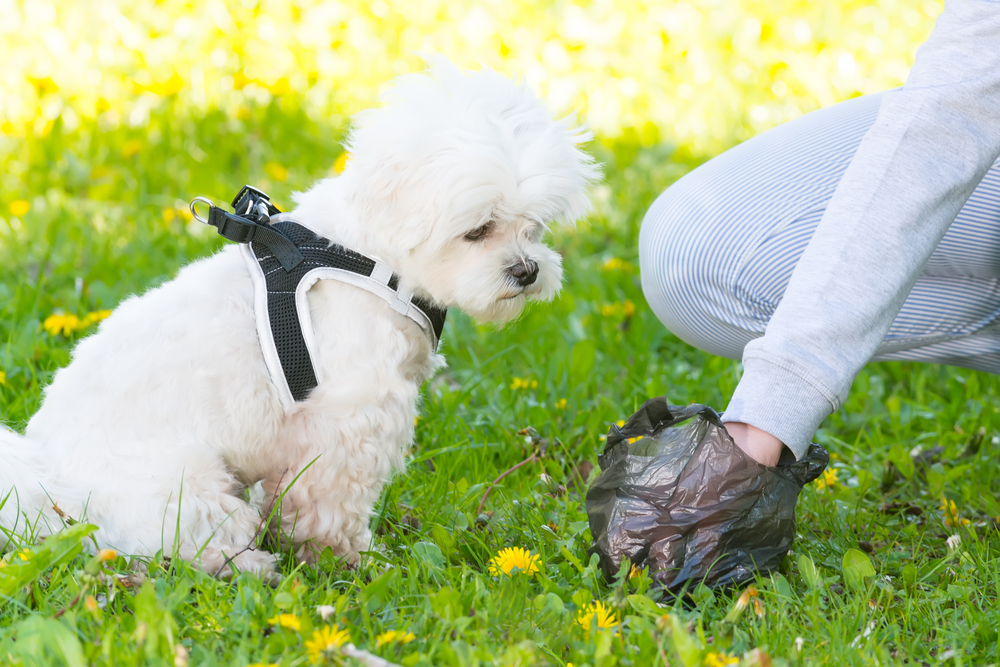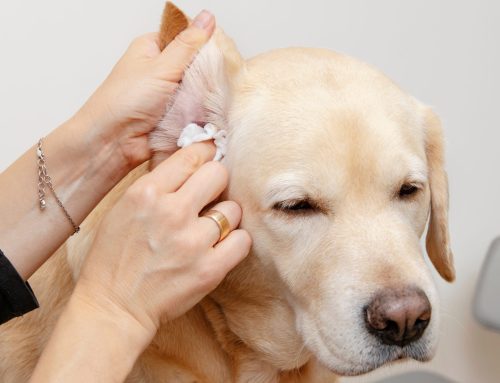Giardia is a protozoan parasite that can infect many mammals, including dogs and people. Our Village Veterinary Hospital team knows that education is key to caring for your pet appropriately, so we provide giardiasis information and tips to help you learn how to safeguard your four-legged friend.
Giardia in dogs and people
Giardia duodenalis is a ubiquitous parasite that has at least eight genotypes (i.e., assemblages), labeled A through H. Human Giardia infections are identified as assemblages A and B, while dogs’ infections are predominantly identified as assemblages C and D. Giardia assemblages can also be divided into sub-assemblages, some of which are zoonotic (i.e., transmittable between humans and animals).
Giardia has two forms. In the parasitic trophozoite stage, the parasite uses whip-like tentacles to swim around a host’s intestine, attaching to the intestinal wall to access nutrients. The infectious stage occurs when the trophozoite curls in on itself creating a hard outward shell to become a cyst. A host sheds cysts in their feces.
Giardia transmission to dogs
The Giardia cysts a host sheds in their feces can survive in the environment for months, continuing to be a source of infection. Your dog can contract giardiasis by coming in contact with the following:
- Fecal matter — If they ingest contaminated feces or fecal-contaminated soil or grass.
- Water — If they ingest water that is contaminated with Giardia cysts.
- Fur — If they groom themselves or other dogs when Giardia cysts are in the fur, which can occur if a dog is shedding the cysts or has rolled in contaminated soil.
- Infected animal — If they eat an infected wild animal.
Giardia signs in dogs
Most dogs who have contracted Giardia exhibit no signs, however, they continue to shed cysts in their feces. Dogs who have the highest illness risk include puppies and adults who have weakened immune systems. The exact way Giardia causes disease is unclear, but possible mechanisms include normal gastrointestinal (GI) flora disruption, toxin production, intestinal wall damage, and digestive enzyme inhibition. After infection, signs typically take 5 to 12 days to manifest and include foul-smelling, greasy, mucus-like diarrhea, gas, abdominal pain, nausea, and vomiting.
Giardia diagnosis in dogs
To diagnose your dog’s giardiasis, our Village Veterinary Hospital team first considers your pet’s complete health history. We then conduct a detailed physical examination, and perform diagnostic screening tests that may include:
- Fecal test — Evaluating your dog’s feces can detect Giardia cysts. However, in some cases, the cysts are shed intermittently, making diagnosis a challenge. If we suspect your dog has giardiasis but their fecal test is negative, we may send a test to the lab that checks for the DNA of the giardia cysts, rather than the cysts themselves.
- Blood work — A complete blood count (CBC) and biochemistry profile helps our team evaluate your dog’s overall health status, blood cell counts, hydration status, organ function, and electrolyte balance.
- Parvovirus test — Depending on your dog’s age and vaccination history, we may run a parvovirus test to rule out this disease, which also causes diarrhea.
Giardia treatment in dogs
If our Village Veterinary Hospital team diagnoses your dog as having giardiasis, we will begin immediate treatment. Please be sure to let our team know if you have other household pets so we can determine whether they should be tested or treated as a preventive measure. If your dog has giardiasis, we may recommend the following treatments:
- Fluid therapy — Giardia can cause diarrhea, which can potentially lead to dehydration and electrolyte imbalances. This could lead to the need for intravenous (IV) or subcutaneous fluid therapy.
- Antibiotic and antiparasitic — Complementary drug treatment, including an antibiotic and an antiparasitic, is typically prescribed to treat giardiasis.
- Bathing — As previously stated, dogs can be reinfected if they ingest Giardia cysts from their fur during grooming, so you should bathe your dog at the beginning and end of treatment.
- Disinfection — You should also disinfect your home and launder your dog’s bedding to prevent reinfection from cysts present in their environment.
Giardia prevention in dogs
Although Giardia is easily transmittable, there are steps you can take to help your dog avoid this parasitic infection. To reduce your dog’s Giardia risk, follow our Village Veterinary Hospital team’s tips:
- Bring your dog in for their yearly wellness exams, so our team can detect conditions, such as decreased immunity, that can lead to parasitic infections or other health issues..
- Don’t let your dog drink from natural water sources or public water bowls.
- Always carry water with you so you can provide your dog with fresh, uncontaminated water.
- Don’t let your dog sniff or ingest fecal material.
- Don’t let your dog hunt or eat wild animals.
Giardia transmission from dogs to humans

While humans are susceptible to Giardia infection, the assemblages that affect dogs don’t typically infect people. Most humans contract the infection by drinking contaminated water. However, to be completely safe if your dog has giardiasis, wear gloves when you handle them or their feces, and wash your hands often.
To have your dog tested for parasites or if you would like more information about Giardia, contact our Village Veterinary Hospital team.



















Leave A Comment